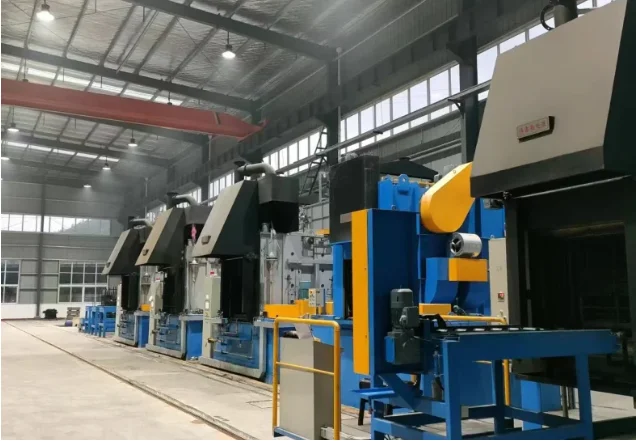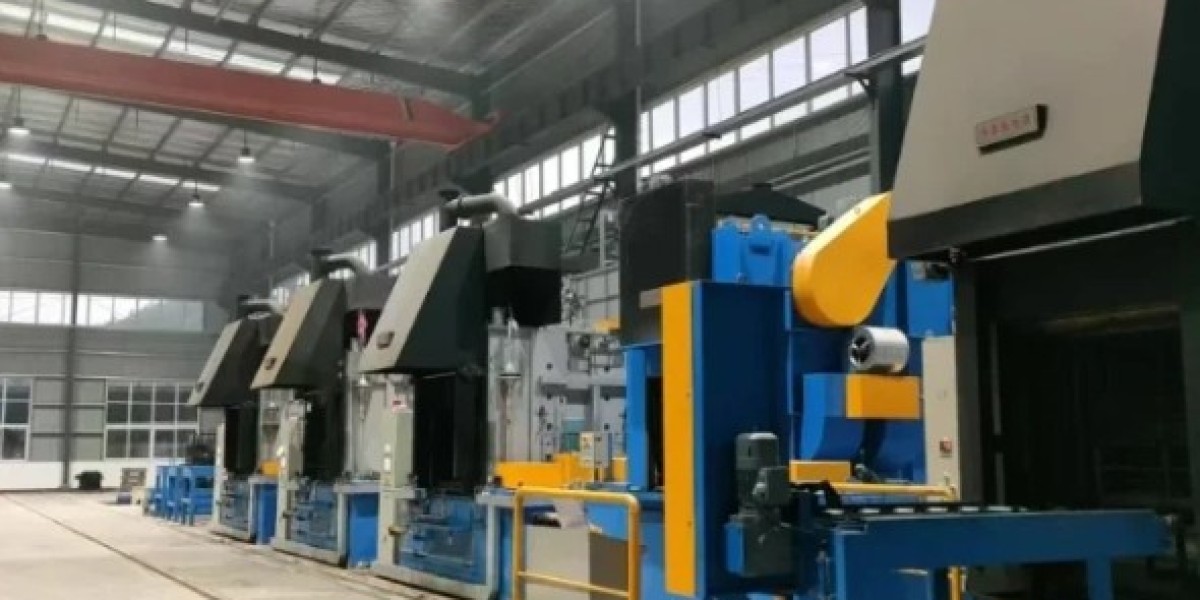Atmosphere furnaces play a vital role in the aerospace and automotive industries, where high-temperature heat treatment processes are critical for the production of high-performance materials and components. These furnaces provide a controlled environment that precisely heats and cools materials, resulting in improved mechanical properties, increased durability and increased resistance to corrosion and wear. From the heat treatment of engine parts to the production of aircraft components, atmosphere furnaces are an indispensable tool in the manufacturing processes of these industries. In this article, we’ll explore the various applications of atmosphere furnaces in aerospace and automotive manufacturing and their benefits in terms of quality, efficiency, and more.
How Atmosphere Furnaces are Used in the Aerospace Industry
Atmosphere furnaces play a crucial role in the aerospace industry, contributing to the manufacturing and processing of various components used in aircraft. These specialized furnaces create controlled environments that allow for precise heat treatment, ensuring the structural integrity and performance of critical parts.
One application of atmosphere furnaces in aerospace is the heat treatment of turbine blades. These blades are subjected to extreme temperatures and stresses during operation, making their strength and durability vital for safe flight. Atmosphere furnaces provide an environment with carefully regulated oxygen levels, preventing oxidation and maintaining the desired properties of these high-performance materials.
Another important use is in the production of aircraft engine components such as shafts, gears, and bearings. Through processes like carburizing or nitriding, atmosphere furnaces enhance surface hardness and wear resistance while maintaining core toughness. This helps increase the lifespan and reliability of these crucial parts under demanding operating conditions.
Additionally, atmosphere furnaces are utilized for brazing applications within aerospace manufacturing. Brazing involves joining metal pieces using a filler material with a lower melting point than the base metals being joined. The controlled atmospheres created by these furnaces ensure proper bonding without compromising component quality or introducing impurities.
Atmosphere furnaces are indispensable tools in aerospace manufacturing due to their ability to achieve precise temperature control and create specific gas compositions tailored to different materials' needs. With their help, manufacturers can produce strong yet lightweight components that meet stringent performance requirements set forth by aviation regulatory bodies worldwide.
Applications of Atmosphere Furnaces in the Automotive Industry
Automotive manufacturers rely on atmosphere furnaces for a wide range of applications that are critical to their production processes. These specialized furnaces provide controlled environments to heat-treat various components and materials used in automotive manufacturing, such as gears, shafts, bearings, and engine parts.
One crucial application of atmosphere furnaces in the automotive industry is carburizing. Carburizing is a heat treatment process that introduces carbon into the surface layer of metal parts to enhance their hardness and wear resistance. By subjecting these components to high temperatures and a carbon-rich atmosphere inside an atmosphere furnace, carburization can be achieved effectively.
Another important application is the annealing process. Annealing involves heating materials to a specific temperature and then slowly cooling them down to relieve internal stresses and improve their machinability or formability. This process helps automotive manufacturers produce components with better dimensional stability and reduced risk of cracking or warping during subsequent machining operations.
Atmosphere furnaces also play a vital role in tempering steel parts used in automobiles. Tempering is a heat treatment technique that reduces brittleness while maintaining strength by reheating previously hardened steel components below its critical temperature point. This improves their toughness without sacrificing durability—a crucial factor in ensuring structural integrity and safety within vehicles.
Moreover, quenching—the rapid cooling of heated metals—is another critical application made possible by atmosphere furnaces in the automotive industry. Quenching transforms austenite (a stable phase) into martensite (a hard phase). This results in increased strength but decreased ductility—ideal for certain automobile components like suspension springs or crankshafts where rigidity takes precedence over flexibility.
In addition to these primary applications, atmospheric furnaces also find use for stress relieving welded joints, brazing intricate assemblies together, sintering powdered metal parts like gears or bushings before further processing—and even sterilization requirements for certain automotive components.

Benefits of Using Atmosphere Furnaces in Aerospace and Automotive Manufacturing
Enhancing the efficiency and quality of manufacturing processes is a constant pursuit for industries such as aerospace and automotive. One technology that has proven to be instrumental in achieving these goals is the use of atmosphere furnaces. These specialized furnaces offer a range of benefits that contribute to improved production outcomes.
Atmosphere furnaces provide precise control over temperature and atmospheric conditions during heat treatment processes. This level of control ensures uniform heating, reducing the risk of distortion or unevenness in components. In both industries, where precision is paramount, this benefit translates into enhanced product performance and longevity.
Another advantage lies in the ability of atmosphere furnaces to facilitate specific heat treatment techniques required by aerospace and automotive applications. For instance, carburizing or nitriding can be achieved with ease within an appropriately controlled atmosphere furnace environment. This enables manufacturers to achieve desired material properties such as increased hardness or wear resistance more effectively.
Furthermore, using atmosphere furnaces also contributes to cost savings due to reduced energy consumption compared to other conventional heating methods used for similar applications. By optimizing temperature distribution throughout the furnace chamber, these systems minimize heat loss while ensuring efficient processing times - ultimately leading to lower operational costs.
Moreover, safety considerations play a crucial role when it comes to manufacturing environments. Atmosphere furnaces are equipped with advanced safety features like automated controls and monitoring systems that ensure stable operations without compromising worker well-being or environmental standards.
The utilization of atmosphere furnaces brings numerous advantages for both aerospace and automotive industries alike. From improved productivity through precise temperature control to enhanced material properties achieved through specialized heat treatments - these versatile machines prove their worth time and again.
Safety Considerations for Operating Atmosphere Furnaces
When it comes to operating atmosphere furnaces in the aerospace and automotive industries, safety should always be a top priority. These powerful furnaces generate high temperatures and utilize various gases to create specific atmospheres within the chamber. As such, there are several important safety considerations that need to be taken into account.
Proper training is essential for anyone who will be operating an atmosphere furnace. This includes understanding how to safely handle and store gases, as well as knowing how to operate the furnace controls effectively. It's crucial that operators have a thorough understanding of all safety procedures and protocols.
Additionally, regular maintenance and inspections play a vital role in ensuring the safe operation of atmosphere furnaces. Inspecting equipment for any signs of wear or damage can help prevent potential accidents or malfunctions. Regular cleaning of the furnace chamber is also important to avoid any build-up or contamination that could compromise its performance or pose safety risks.
Furthermore, implementing effective ventilation systems is key when working with atmosphere furnaces. Proper ventilation helps remove harmful fumes or gases from the workspace, protecting both operators and nearby personnel from exposure.
Another critical aspect of safety is wearing appropriate personal protective equipment (PPE). Operators should always don heat-resistant gloves, goggles, and fire-resistant clothing when working with atmosphere furnaces. This provides an additional layer of protection against high temperatures and potential splashes or spills.
Prioritizing safety is paramount when operating atmosphere furnaces in the aerospace and automotive industries. By providing comprehensive training for operators, conducting regular maintenance checks on equipment, implementing proper ventilation systems, utilizing PPE gear appropriately,and having emergency protocols in place - companies can ensure a safer working environment for everyone involved.

Conclusion
Atmosphere furnaces play a crucial role in both the aerospace and automotive industries. These specialized heat-treating systems provide controlled environments for various manufacturing processes, ensuring the production of high-quality components.
In the aerospace industry, atmosphere furnaces are used for critical applications such as annealing, brazing, and stress relieving. The ability to precisely control temperature and gas composition allows manufacturers to achieve the desired material properties required for aircraft components. This results in enhanced strength, durability, and performance of vital parts like turbine blades, landing gear components, and engine parts.
Similarly, in the automotive industry, atmosphere furnaces find extensive use in heat treatment processes like carburizing and hardening. By subjecting metal parts to specific temperatures and controlled atmospheres within these furnaces, automakers can enhance the wear resistance and strength of gears, crankshafts,and other vital drivetrain components.
The benefits of using atmosphere furnaces are manifold – improved part quality with uniform heating distribution throughout the process chamber ensures consistent results; increased productivity due to shorter cycle times; energy efficiency by optimizing gas consumption; reduced scrap rates through precise control over thermal profiles; and compliance with strict industry standards.
However,it is important to note that safety considerations must be a top priority when operating atmosphere furnaces. Proper training on equipment operation procedures along with regular maintenance checks ensure safe working conditions for operators while also preventing accidents or mishaps.
In summary,the aerospace and automotive industries heavily rely on atmosphere furnaces for their heat-treating needs.
By harnessing advanced technologyand precise control over temperatureandgascomposition,resultantmanufacturedcomponents exhibit superior performance,durability,andstrength.










